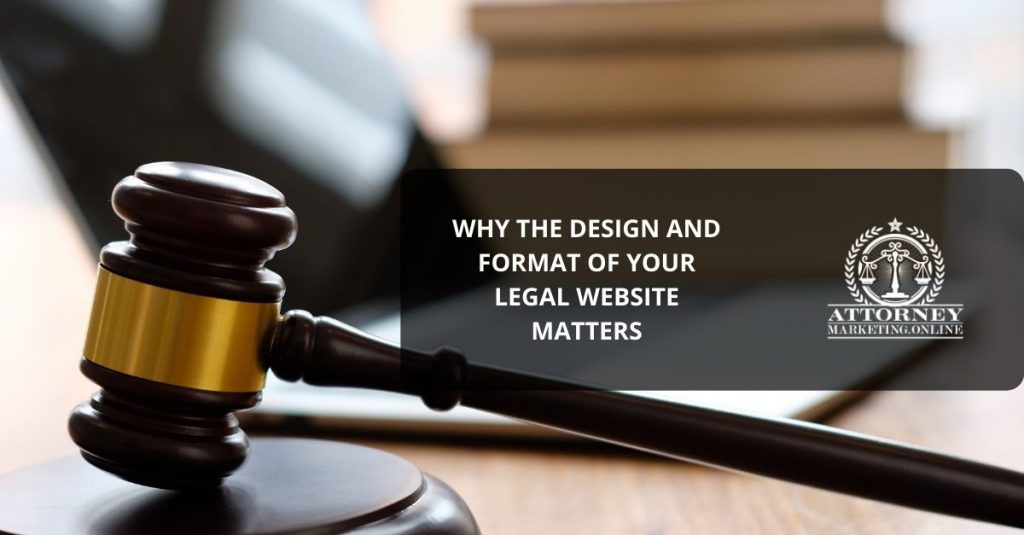How do you convert leads for your legal website?
That question weighs heavily on the minds of most attorneys. That is why it matters how you build your website in terms of functionality and ease of use. People seek legal services online all the time. Therefore, you must make sure your website conveys a strong presence.
If it fails to do this, you need to learn more about your client.
Questions You Need to Ask
Let’s look at some of the questions you should ask.
- What are your customer’s needs?
- What are our clients seeking when they visit your legal website?
- Does your website answer their questions and concerns?
- Are you making it easy for clients to contact you?
Clients who visit your website typically perform their own research first. Doing so allows them to make an informed decision when selecting an attorney. That is why you need to make your website user-friendly.
So, what makes a website user-friendly?
Making Your Legal Website User-Friendly
User-friendly websites are navigational websites that allow the user to delve further when gathering facts and information. They allow the user to find answers easily and fast because the pages load lightning-fast. After all, who wants to wait around a long time for a web page to load and appear?
Why You Should add Bolding
Part of making a website user-friendly also exists in the format. Are you using header tags? How are you formatting your paragraphs? Many legal websites leave out the use of bold text. However, this is highly important, as it draws the eye to important details. If you want to inform your reader of certain facts or data, you cannot ignore the use of bolding to get your point across.
Are Your Pages Readable?
While the use of H1, H2, and H3 header tags nicely break up text and allow Google to rank you higher, you also need to consider readability. Make sure you are using a font that is clear to scan and that your paragraphs are not too lengthy.
You may post well-written text on your blogs and web pages. However, you won’t keep your reader’s attention if a paragraph is too lengthy. Make sure that each paragraph you write is about 3 to 5 lines.
Establishing the Reason for Your Legal Website
The website for a law firm serves various purposes. Not only can it be used to share information about a practice’s services, it gives potential clients the chance to ask about those services. Make your website stand out by showing what makes your law firm unique.
Create a Value Proposition
To identify your uniqueness, you need to create a value proposition – highlight the reasons why you are the best legal choice. This message should resonate throughout your blog and website.
To create a value proposition, define your target client’s primary concerns – concerns that extend to your areas of service.
Show how your legal services will solve your client’s problems by listing the advantages of using your law firm. Don’t pinpoint the features. Instead, list the benefits. You also want to show you’re someone who provides value for what you provide legally.
Creating an Authority Site
According to Search Engine Watch, an authority website is a trusted website – one that is trusted by legal professionals, other websites, search engines, and users. To become this type of site, you need to create great content. Great content attracts other authority sites, which shows, to Google, you have that needed vote of confidence.
If you want your legal website to stand out, becoming an authority site is important. It also pays to regularly blog.
Forbes also recommends that you leverage blog posts with social media. Doing so will help you reach out to the masses as well as gain insights about what your audience thinks about your services.
Therefore, a blog is an important part of a legal website design. Keep things user-friendly and write excellent and readable content for an optimum user experience. Also, make good use of SEO. Allow your keywords to fall naturally into the content.
Adding the Right Amount of Keywords
The keywords you use and where they are placed figure prominently in your rankings. Preferably, it is best to include a ranking keyword in your main header and allow it to settle in the first line of your first paragraph.
You can also sprinkle the main keyword and secondary keywords throughout the content.
Include the main keyword at the end of the text as well, or next to the call-to-action (CTA). As a general rule, your keyword density should hover around 1 to 2%. Therefore, a keyword should appear about once or twice for every 100 words of print.
This amount of keyword use allows the search engines to figure out what you are trying to say on your web page.
Therefore, make sure you understand the use of keywords when implementing the design and format of your legal website.
Who to Call About Your Website’s Design
Do you need assistance in creating an authoritative legal website? If so, your go-to online marketing provider is Attorney Marketing Online. Phone (888) 992-9529 or (323) 433-6529 for all the details.

